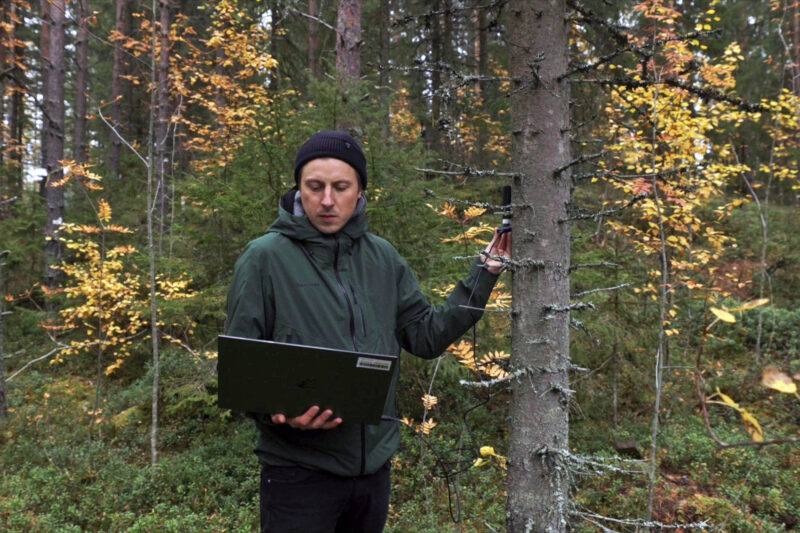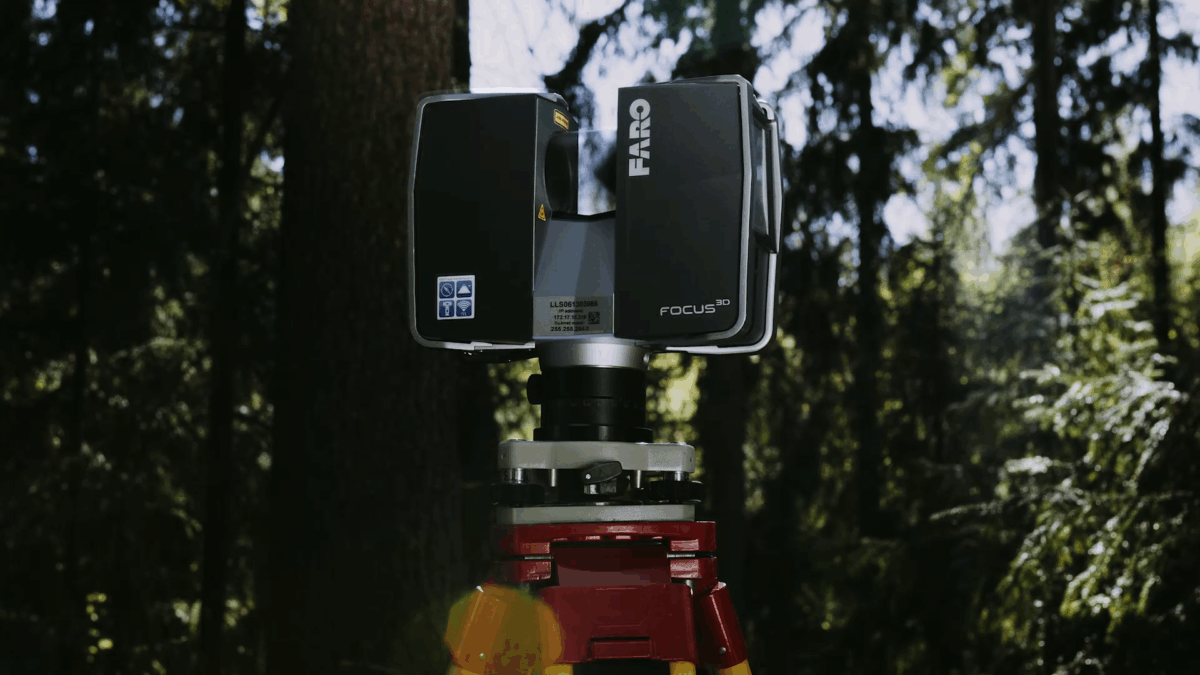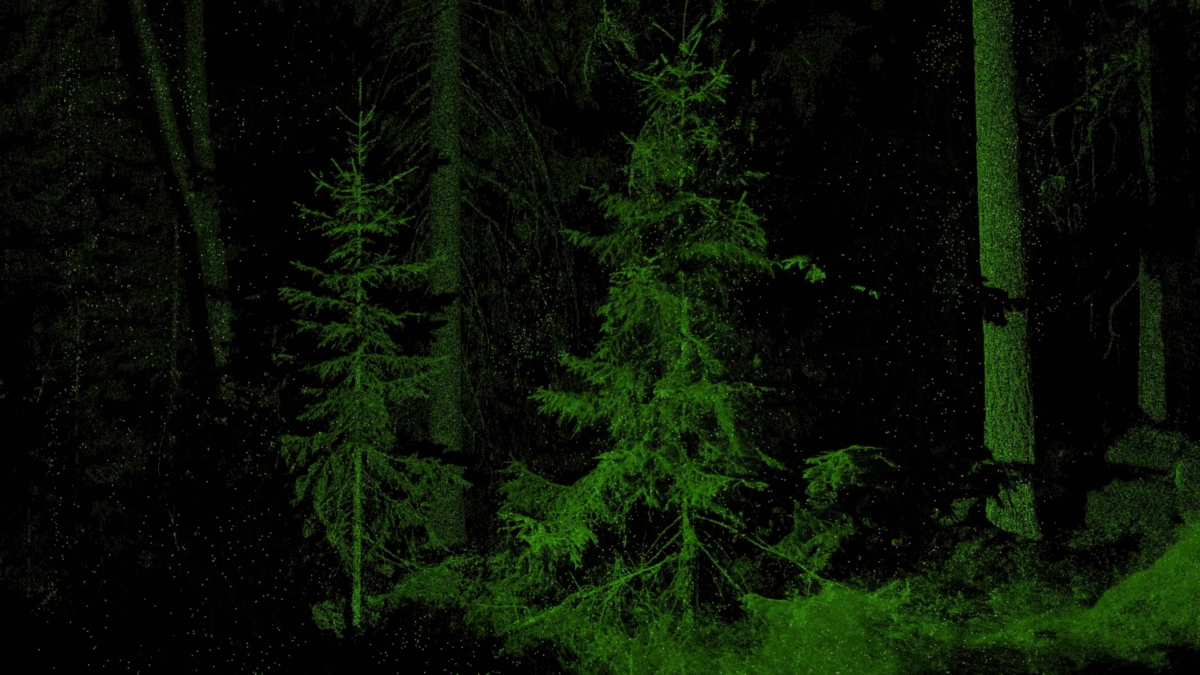Forests under siege: Climate change drives global tree mortality

Tree mortality is accelerating at an alarming rate across the globe. In many European countries, the trend is especially troubling for Norway spruce (Picea abies) forests, which are particularly sensitive to the effects of climate change.
Samuli Junttila, Associate Professor of Laser Scanning at the University of Helsinki, is part of an international research group investigating the causes and consequences of this phenomenon.
“Tree mortality is one of the biggest issues facing the future of forests. This isn’t only an issue in Finland and in Scandinavia, but a global one,” he says.
Spruce mortality has reached worrying levels, driven largely by climate-induced stress and outbreaks of pests. Norway spruce — a dominant species in Northern, Central and Eastern Europe — is highly vulnerable to drought and heat, which weaken its defences and make it an easy target for bark beetles. Rising mortality rates pose a threat to biodiversity, forest health, carbon sequestration, and the economic stability of forest industries.
“Climate-related stressors such as drought, heatwaves, storms, and pest infestations weaken trees physiologically, making them more susceptible to disease and reducing their ability to recover,” Junttila explains.
Recent studies show that tree mortality has, in fact, surged in some regions, with increases of up to 50% over recent decades. A review published in New Phytologist links this alarming trend to anthropogenic climate change — shifts in the Earth’s climate directly caused by human activities, such as fossil fuel combustion and deforestation. These changes pose serious risks to biodiversity, carbon storage, and ecosystem stability.
While the trend is clear, Junttila cautions that the full extent of climate-driven tree mortality remains difficult to quantify.
“Modelling is still incomplete, and we do not fully understand the physiological mechanisms behind tree death,” he says.
“But estimates suggest that climate change could be responsible for 10 to 50 per cent of observed tree mortality.”
Climate stress and bark beetles
Scientists agree that climate change is the primary driver behind the rising number of tree deaths worldwide.
“Increasing drought makes trees particularly vulnerable to damage caused by bark beetles, such as the European spruce bark beetle,” Junttila points out.
“Increasing temperatures and storms further weaken trees and accelerate beetle reproduction, allowing infestations to spread even to healthy trees.”
Samuli Junttila’s research team has focused on tree mortality specifically caused by the bark beetle. A recent study published in Trees, Forests and People (Feb 2025), analysed stem diameter changes in 57 spruce trees—some healthy, others infected—between 2020 and 2022, using high-precision dendrometers.
The results showed that bark beetle-infested trees exhibited sharp drops in diameter long before death, indicating early signs of stress and dehydration.
Junttila notes that the thickness of trees naturally varies throughout the day: During the day, trees release more moisture and are thinner. At night, they are thicker because they contain more water.
“Our research found that tree growth slows down after the bark beetle has infested the tree, long before growth stops and the tree dies. Infected trees showed sharp drops in diameter as the tree began to dry out.”
However, the team also observed considerable variation between individual trees.
“This may be influenced by the number of beetles reproducing within a tree or by other stress factors the tree is experiencing,” Junttila notes.
“These dynamics should be investigated more closely in future research.”

Finland’s spruce challenge
In Finland, Norway spruce (Picea abies) accounts for roughly a quarter of the country’s forest area, with its highest concentrations in southern and central regions where growing conditions have traditionally been more favourable. As a cornerstone of the forest industry, spruce plays a vital role in the production of sawnwood, pulp, and paper, contributing significantly to Finland’s forest exports and representing a significant share of the 64 million cubic meters of industrial roundwood harvested annually.
Despite its economic importance, Associate Professor Samuli Junttila cautions that the future of the Norway spruce as a dominant species is increasingly uncertain due to its heightened vulnerability under a warming climate.
“Huge numbers of spruce trees are still being planted, even though I don’t see a positive future for spruce as a main tree species here,” Junttila notes.
“Increasing biodiversity is one of the most important ways to boost forest resilience.”
Monoculture forests—dominated by a single tree species and age group—are especially vulnerable to pests, diseases, and extreme weather. In contrast, mixed-species forests are more resilient to climate-related stress and offer forest owners reduced financial risk and greater long-term sustainability. The importance of mixed forests is well recognised in the forestry sector and is reflected in forest management recommendations and guidelines issued by forestry companies.
Monitoring forests with technology
Samuli Junttila leads the Global Ecosystem Health Observatory (GEHO), a research group of the University of Helsinki. GEHO harnesses advanced technologies—including satellite imagery, laser scanning, and drone-based monitoring—to track forest health and detect tree mortality with unprecedented precision.
“Forests live for hundreds of years, so monitoring them requires long-term commitment,” Junttila emphasises.
“We still lack detailed data on where, when, and why trees are dying—but new tools are helping us close that gap.”
Laser scanning allows researchers to map the three-dimensional structure of forests, while satellite imagery reveals large-scale changes across landscapes. Combined with on-the-ground field measurements, these methods provide a more comprehensive and dynamic view of forest conditions.
GEHO’s mission is to deliver long-term, high-resolution data on how ecosystems respond to environmental stressors such as drought, heatwaves, pest outbreaks, and land-use changes. By integrating remote sensing with field measurements, the observatory builds a detailed, global picture of ecosystem resilience and vulnerability, helping scientists, policymakers, and forest managers make informed decisions on conservation and climate adaptation.
“Remote sensing technologies now allow us to monitor tree mortality down to the level of individual trees from the air or via satellite,” Junttila explains. “However, tracking the death of seedlings and smaller trees still requires close-range fieldwork or drones capable of navigating within the forest canopy—systems that are actively being developed.”

The future of forests depends on political decisions
Junttila emphasises that the future of forests hinges on how quickly forest management practices are adapted to the realities of climate change. Policymakers must understand that forests’ ability to sequester carbon is likely to decline due to increased tree mortality and reduced growth.
“From a climate change mitigation perspective, this means that logging may need to be reduced more than previously thought, to cut emissions and preserve forests as carbon sinks,” Junttila explains.
“Forests should be valued primarily for safeguarding ecosystems and the planet’s functions, not just for their economic output.”
According to Junttila, understanding the effects of tree mortality on both nature and society is key to shaping the forests of the future.
“We need bold decisions on which species we plant today, along with increased investment in research and education—especially in monitoring forest health and biodiversity. The forests of tomorrow are being planted today, and we can directly influence how resilient they will be to climate change.”
“Understanding tree mortality is vital, so countries can establish national emissions reduction targets grounded on the basis of scientific knowledge, and plan for sustainable forest use,” notes Junttila.
Maintaining and strengthening the carbon sink provided by trees is among the key climate measures of European countries, alongside phasing out fossil fuels. That is why accurate knowledge of tree health is crucial when countries aim to limit global warming to no more than 2°C above pre-industrial levels, as set out in the Paris Agreement.